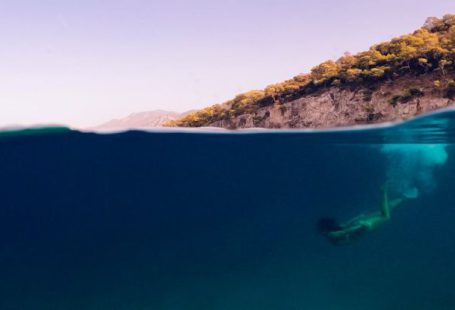When planning a dive trip, there are numerous factors to consider to ensure a safe and enjoyable experience. One critical aspect that often gets overlooked is the weather conditions at the dive destination. Weather plays a significant role in diving safety and can greatly impact your overall dive experience. From visibility to currents and marine life sightings, understanding and considering the weather conditions before embarking on a dive trip is essential for all divers.
Choosing the Right Season
Selecting the right season for your dive travel is crucial to ensure optimal diving conditions. Different locations have varying weather patterns throughout the year, affecting water temperature, visibility, and marine life activity. Researching the best time to visit a particular dive destination can make a significant difference in the quality of your diving experience. For instance, some destinations have a rainy season that may reduce visibility or create unsafe diving conditions. Planning your trip during the dry season can help you avoid these weather-related challenges and enjoy better diving conditions.
Monitoring Weather Patterns
Before your dive trip, it is essential to monitor weather patterns at your destination. Checking the local weather forecast, wind conditions, and sea surface temperatures can give you valuable insights into what to expect during your dives. Sudden changes in weather can impact sea conditions, causing strong currents or rough seas, which may pose risks to divers. By staying informed about the weather conditions, you can plan your dives accordingly and make informed decisions to ensure your safety underwater.
Visibility and Water Temperature
Weather conditions directly influence water visibility and temperature, two crucial factors that can affect the quality of your dives. Rainfall, wind, and ocean currents can impact visibility by stirring up sediment and reducing the clarity of the water. Similarly, water temperature can vary depending on the weather, with colder temperatures affecting marine life behavior and divers’ comfort levels. Understanding how weather conditions influence visibility and water temperature can help you prepare for your dives and choose the right gear to ensure a comfortable and enjoyable experience underwater.
Safety Considerations
Weather conditions play a significant role in diving safety, and being aware of potential risks is essential for all divers. Strong winds, rough seas, and thunderstorms can create hazardous conditions for diving, increasing the likelihood of accidents or injuries. It is important to prioritize safety and avoid diving in adverse weather conditions, even if it means rescheduling or canceling your dives. By staying vigilant and monitoring weather updates, you can make informed decisions to protect yourself and your dive buddies while exploring the underwater world.
Adapting to Changing Conditions
Weather conditions can be unpredictable, and divers must be prepared to adapt to changing circumstances during their dive trips. If weather conditions deteriorate unexpectedly, it is essential to have a backup plan or alternative dive sites to ensure a safe and enjoyable experience. Flexibility is key when dealing with changing weather conditions, and being prepared to modify your dive itinerary can help you make the most of your trip while staying safe underwater.
Conclusion: Planning Ahead for a Successful Dive Trip
In conclusion, considering weather conditions is essential for dive travel planning to ensure a safe and rewarding experience. By choosing the right season, monitoring weather patterns, and understanding how weather influences visibility and water temperature, divers can make informed decisions to optimize their dive trips. Prioritizing safety, adapting to changing conditions, and staying informed about weather updates are crucial steps in planning a successful dive adventure. Remember, weather conditions may vary, but with careful planning and preparation, you can enjoy unforgettable dives in some of the world’s most spectacular underwater environments.





